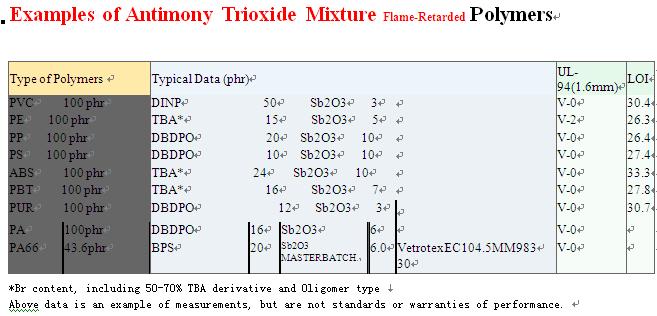This 280 page review from Business Communications Company entitled 'Flame Retardancy Industry Review' (and 65,000 other titles) can be obtained from market research supplier Midnight Croquet. This publication analyses the most important developments of 2003 in the flame retardant (FR) chemicals industry.
It covers such fields and applications as: halogenated chemicals; non-halogenated chemicals; intumescents; nanocomposites; polymers/resins; textiles/fibres; adhesives; automotive; construction; standards/testing; fire; suppression/safety; market trends; research; and industry news.
Many major events in 2003 made the year an historic one for the flame retardant chemicals industry.
In the laboratory, major advances were achieved in the application of nanotechnology to flame retardancy.
In the political arena, regulations in California brought America's most populous state in line with the European crackdown on some brominated flame-retardants.
Meanwhile, a host of new products were brought to market, including many new brominated retardants, and retardants designed to replace bromine solutions.
The science of understanding and using nanocomposites for flame retardancy moved from infancy to adolescence in 2003.
The most important development was the growing consensus among flame retardancy researchers that nanoparticles are more effective as a synergist than as a standalone flame retardant additive.
Scientists are discovering that nanoparticles alone do not provide sufficient flame retardancy to most polymers in the majority applications.
However, nanoparticles can play a valuable role in synergistic use with flame-retardant chemicals.
After years of watching Europe wrangle over proposed regulations to restrict some brominated flame retardants, California stole the spotlight by enacting its own ban on products containing some halogenated retardants.
The law forbids the manufacture, processing or distribution of any product containing penta- or octa-BDE, effective from January 1, 2008.
The original bill also targeted deca-BDE, but that flame retardant was dropped from the ban before the law was passed.
Meanwhile, two European Union directives restricting brominated retardants became law in 2003.
The RoHS (restrictions on hazardous substances) and WEEE (waste electrical and electronic equipment) Directives are the culmination of years of wrangling in Europe about brominated flame-retardants.
The RoHS Directive outlaws the marketing or use in Europe of three brominated flame-retardants: PBB (polybrominated biphenyl), penta-BDE and octa-BDE.
The bans take effect from July 1, 2006.
Manufacturers were pleased that a similar ban was not implemented on deca-BDE, one of the top flame-retardants used in plastic housings and electronic components.
The WEEE Directive regulates the handling of waste from electrical and electronic equipment.
The law requires that most WEEE be collected and disposed of separately from other waste, and that plastic waste containing brominated products be separated from other plastics before disposal or recycling.
Nevertheless, brominated retardants remain the most effective and economical way to add flame retardancy to plastics.
In the USA, bromine retardants make up more than one-third of all flame-retardant chemicals used (measured by dollar value).
Anti-bromine activists hope the new EU restrictions will force computer and appliance manufacturers to turn to non-halogenated flame retardant additives.
However, the industry also has been preparing for the new rules by seeking viable technologies to separate bromine from plastic during the recycling process.
Not all-regulatory activity has to do with toxicity and environmental concerns.
Also of importance, of course, is fire safety.
The American Home Fire Safety Act, introduced to the USA Senate in October 2003, would mandate comprehensive national fire-safety standards for upholstered furniture, mattresses, bedclothes and candles.
The bill would require the USA's Consumer Product Safety Commission to develop national fire standards in the four categories.
In California starting in 2004, all residential mattresses sold in the state must meet open-flame flammability requirements.
Some manufacturers who believe they have seen the writing on the wall have been moving away from the use of brominated flame retardants in favour of non-halogenated solutions, based on such chemicals as phosphorus, alumina trihydrate, magnesium hydroxide, melamine, silica and zinc borate.
Two applications for which there is a growing demand for non-brominated retardants is the wire and cable industry, and thin-walled polymer applications.
For further details, including the table of contents, visit the Midnight Croquet market research site and perform a Code Number Search for report 2404891.
src="http://pagead2.googlesyndication.com/pagead/show_ads.js">
Best regards,
**********************
DONGGUAN JIEFU FLAME-RETARDED MATERIALS CO.,LTD
Sam Xu 许彪
Sales Engineer
Tel: 86-755-83474911
Fax: 86-755-83474980
Mobile:13929211059
E-mail: xubiao_1996@hotmail.com samjiefu@gmail.com
Add: jiefu industrial park shuiping industrail district dalang town dongguan GD,P.R.C
WebSite: http://www.jiefu.com
blog:http://jiefuantimonytrioxide.blogspot.com
Export: antimony ingots,ATO,dust free ATO,ATO masterbatches EVA80.EAV90;PE80,PE90,PVC85,PP80,ETC, other flame retardant masterbatches,
¤ ╭⌒╮ ╭⌒⌒╮
╱-◥██◣ ╭ ╭ 工作顺利!天天开心! @-@
︱田︱田田| ╰----------------------
╬╬╬╬╬╬╬╬╬╬╬╬╬╬╬╬╬╬╬╬╬╬╬╬








0 comment:
Post a Comment